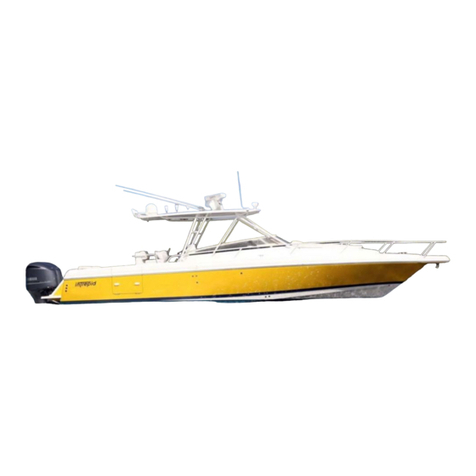
INTRODUCTION
Intrepid Yachts are constructed in a recently remodeled facility located in East
Taunton, Massachusetts. Intrepid Yachts is a division of Cape Dory Yachts, a long
established leader of quality constructed fiberglass yachts, which has been in business for
over fifteen years. Intrepid Yachts are assembled using modern methods, equipment, and
materials obtained from the most reputable suppliers.
Our team of managers, supervisors and quality control personnel do their very
best through every step of the construction process. We here at Intrepid Yachts strive to
build boats of outstanding quality which will provide their owners with many years of
sailing pleasure and retain high resale value.
The basic idea behind the formation of Intrepid Yachts was to bring to the sailing
community a quality built yacht using contemporary standards and design practices that
are now recognized as providing superior performance under sail. Without going to the
extremes that are possible with a fin keeled yacht, we have been able to offer designs
which are both performance oriented and suitable for racing, yet comfortable, attractive,
and seaworthy, criteria for any yacht regardless of vintage.
We are aware of the tremendous forces a sailing yacht can generate and have
taken great care to be sure that the high stress areas are substantially reinforced to give
you trouble free performance under the worst conditions.
To protect your investment and to insure the enjoyment of your new Intrepid
Yacht, we recommend that you read this manual carefully and complete the
Commissioning Checklist contained in it with your dealer. This list will serve as a guide
in determining that no loss or damage has occurred to your boat while it was being
transported from the factory to the dealer, and that all equipment is in order when you
accept delivery. the checklist is for your protection; insist that it be completed. One
copy must be returned to Intrepid Yachts as a warranty registration. Once this
registration process has been satisfactorily completed, you dealer will, if necessary, be
able to file warranty claims for part or service. He cannot do so unless the checklists are
completed and returned.
- 6




























